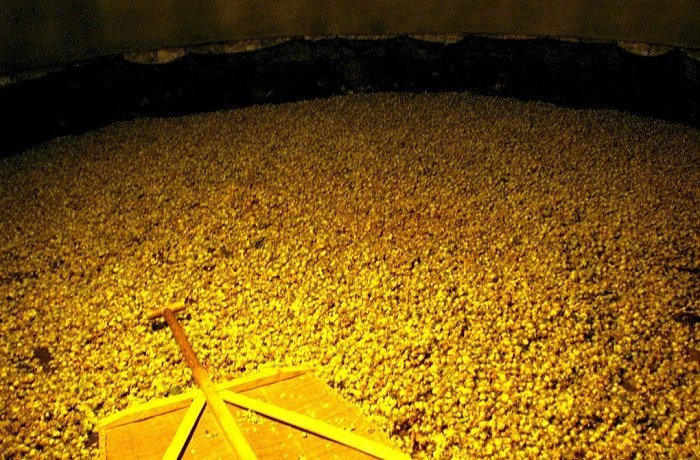
In this new occasional series, we’ll explore the rich variety of regional foods that you can find around the UK. For centuries Kent has been known as the Garden of England, and with good reason. The county, located at the southeastern tip of the British Isles, has lush fertile grazing lands, acres of orchards, and a coastline teeming with sea life. All in all, its location makes it a rich source of many different foods. Here are a few traditional Kent foods.
Oysters
The fishing town of Whitstable, on Kent’s northern coastline, is renowned for its oysters, and the local industry dates back to at least the 1400s. At one point, the beds were a source of cheap, local food. Now, oysters are much more of a delicacy but you can still sample the local produce at the town’s annual Oyster Festival. One traditional way to enjoy them is as part of the Whitstable Dredgerman’s Breakfast. Top doorsteps of toasted bread with oysters and thick slices of fried bacon – a hearty way to start the day.

Huffkins
Every region in the United Kingdom has its own variation on the bread roll. In Kent, it is the huffkin, notable for the small indentation in the middle, made by the baker’s thumb. Legend says that a baker’s wife was furious with her husband one day and stuck her thumb in every one of his bread rolls before baking. She then challenged him to sell the spoiled goods. He did and people wanted more. Enjoy the huffkin on its own, or fill the indentation with a fresh local cherry, a spoonful of jam, or a dollop of whipped cream. You often also find them filled with bacon as a lunchtime snack.

Dover Sole
The stretch of the English Channel between Kent and France has long been a fertile fishing ground. Dover sole is one of the flat fish that are plentiful in this area and so popular on many a dinner plate. They are often served grilled or fried with a lemon garnish and some locally-grown potatoes.

Hops/ Beer
Hops have been grown in Kent since they were first introduced from the continent in the 1500s. Throughout the late 1800s and the first half of the 20th century, poor families from London’s East End would flock to Kent for a working holiday, escaping the city smog to pick hops. Although hop-picking is now automated, oast houses – traditionally used for drying – still dot the Kent landscape as do plenty of small breweries.

Appledore Chicken Pie
The village of Appledore was once a busy river port and has seen multiple invasions over the centuries from the Danes in the 9th century to the French in 1380. The pie that bears the village’s name brings together chicken and hard-boiled egg in a creamy herbed bacon sauce.
Lamb’s Tail Pie
The Romney Marsh part of South Kent is known for its sheep, bred to endure the winds and rain that can sweep across the open marshlands. The meat is highly prized for its tenderness and flavor. This pie was a special treat for the farmers who would send most of their meat to market. After the lambs’ tails were docked, they would be simmered and baked into a pie. Although the use of tails in a pie has largely died out, lamb is still a local favorite.
Cobnuts
It is not unusual to find traditional Kent recipes which call for cobnuts. This regional variety of the hazelnut is not as commonly grown as it was 100 years ago although it is making something of a comeback. Cooks can use cobnuts in many ways, including roasting them and mixing them with ginger in a cake.

Folkestone Pudding Pie
This dessert is known by several alternative names including Kentish Pudding Pie and Kentish Lenten Pie. A baked custard tart with raisins and nutmeg, historians believe it originated as a meal for the Lent period. Some older recipes also call for the raisins to be soaked in sherry.
Gypsy Tart
This very sweet dessert originated in East Kent and consists of just evaporated or condensed milk and brown sugar, baked in a pastry shell. It is said to have originated when an elderly woman saw some gypsy children playing outside and complaining of hunger. She grabbed all that she could find in her pantry and the gypsy tart was born. A personal childhood favorite of mine, you can find gypsy tart throughout Kent in bakeries and on some dessert menus. Be warned though – it is very sweet!

Canterbury Apple Pie
In Chaucer’s time, Canterbury was a popular destination for religious pilgrims and some of the earliest known recipes for apple pie date back to then. The modern Canterbury apple pie is most likely an adaptation of those early recipes. It is an open-faced tart, made with both dessert and cooking varieties of the fruit, grown in orchards throughout the county. If you want to follow the medieval versions, add saffron for a rich golden color.



